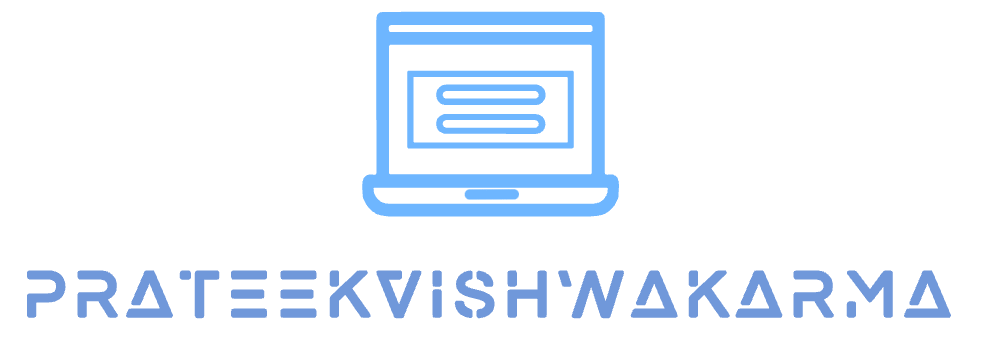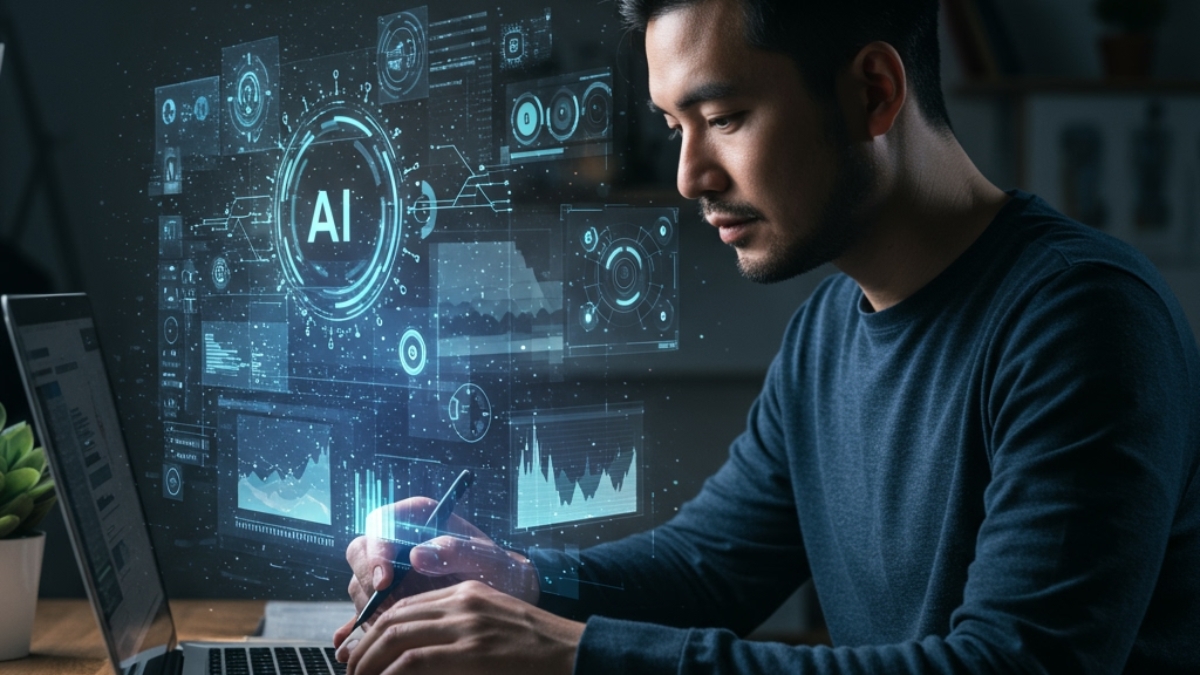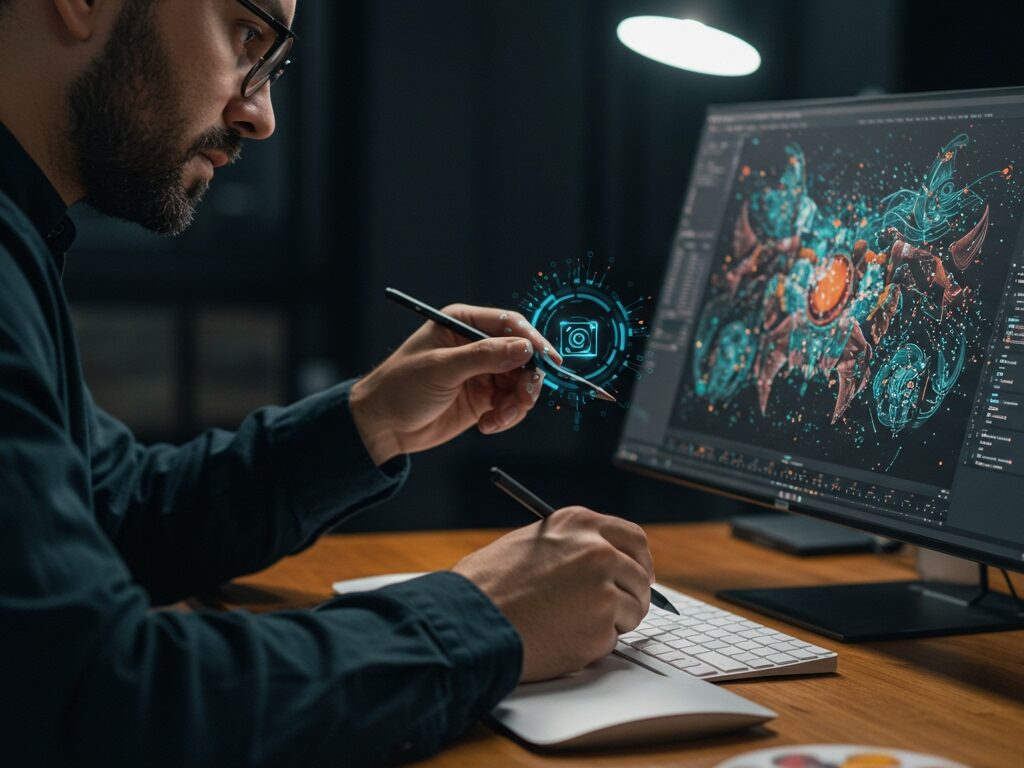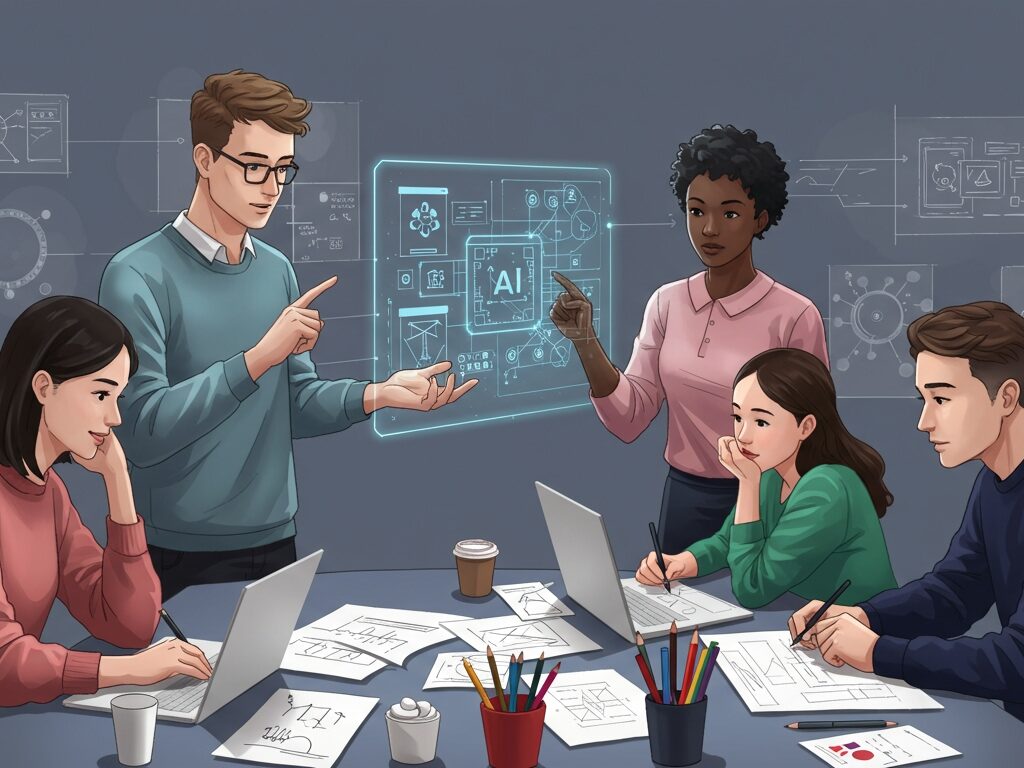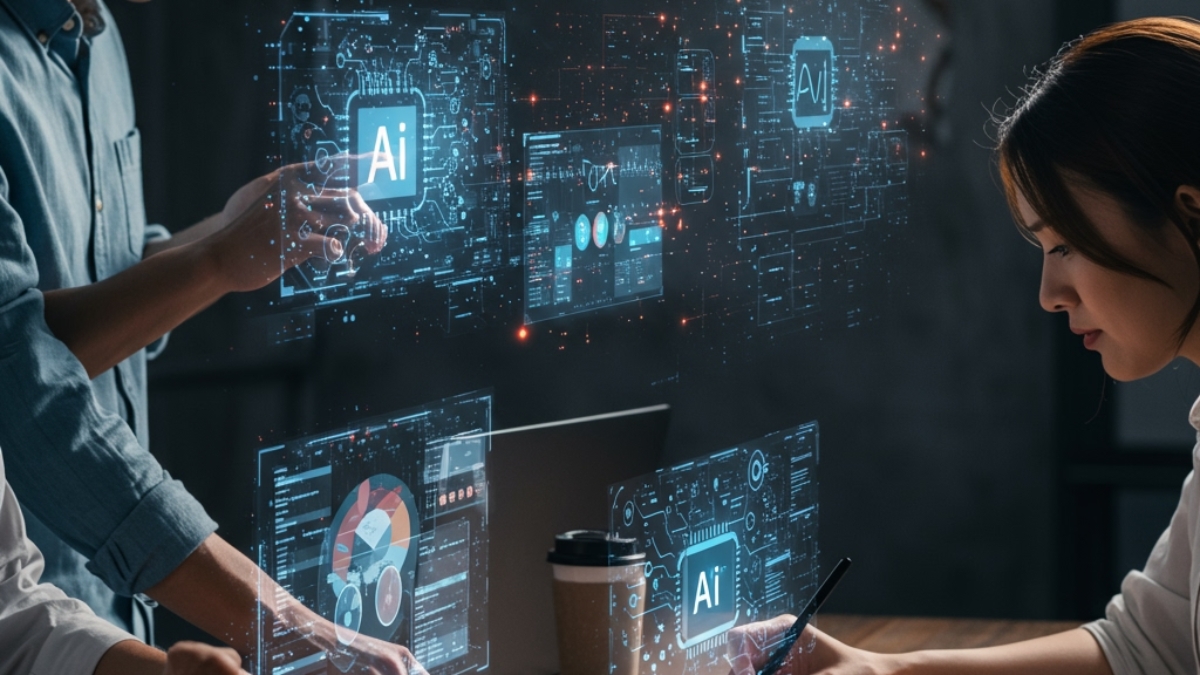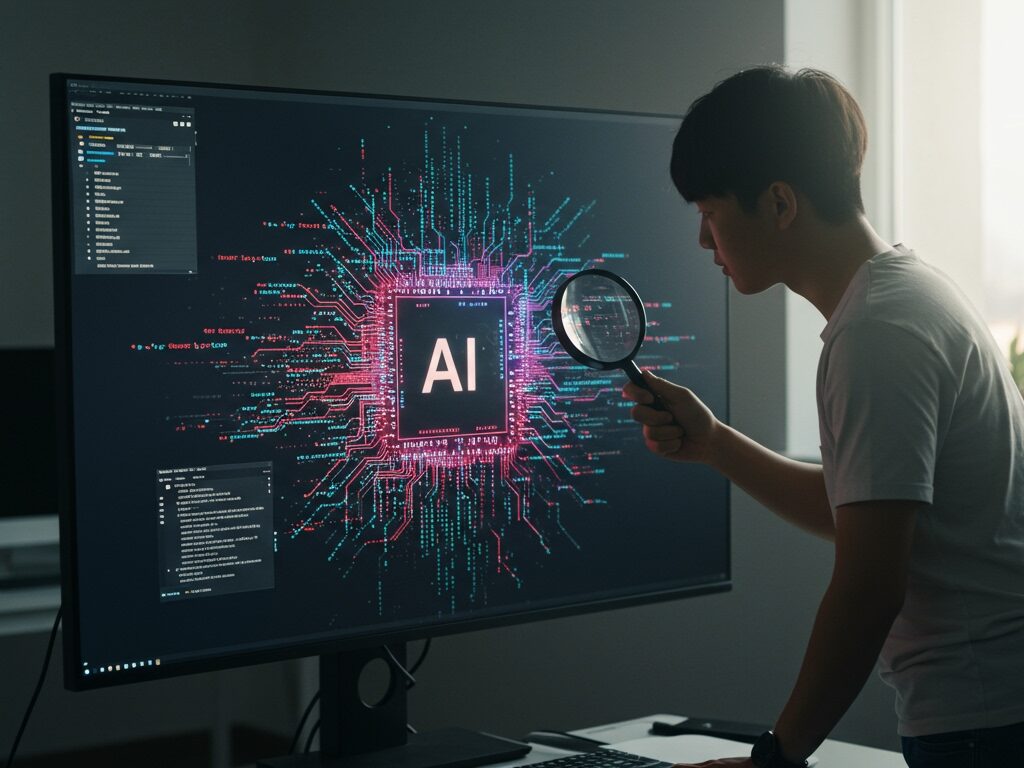Table of Contents
How can prompt engineers reduce LLM token costs for complex applications?
If you’re building complex applications with Large Language Models (LLMs), you’ve likely faced a common challenge: rising API costs. LLMs are powerful, but their token-based pricing means every word, character, and piece of context adds to your expenses. For high-volume or sophisticated applications, these costs can quickly become unsustainable. But don’t worry! As an experienced prompt engineer, I’ve seen how strategic prompt optimization can dramatically reduce token usage without sacrificing output quality or performance. It’s not just about writing good prompts—it’s about engineering them for maximum efficiency.
This guide dives deep into advanced prompt engineering strategies designed to tackle LLM token costs in complex scenarios. You’ll discover actionable techniques that go beyond basic instructions, helping you build more cost-effective and scalable generative AI solutions.
Key Takeaways
- Prioritize Prompt Compression: Aggressively condense inputs by removing redundancy, summarizing context, and optimizing few-shot examples to minimize token count.
- Implement Multi-Stage & Conditional Prompting: Break down complex tasks into smaller, sequential steps, using simpler models or conditional logic to only request necessary information.
- Leverage Caching & RAG: Utilize semantic caching for repetitive queries and Retrieval-Augmented Generation (RAG) to dynamically fetch only relevant external data, drastically reducing input tokens.
- Strategic Model Selection & Fine-tuning: Match model complexity to task requirements, opting for smaller, specialized models or fine-tuning when appropriate to avoid overpaying for unnecessary capabilities.
Understanding the Token Economy
Before we dive into solutions, let’s quickly demystify tokens. A token is the basic unit of text that an LLM processes. It can be a whole word, a part of a word, or even punctuation. For most English text, 1,000 tokens equate to roughly 750 words. Every interaction with an LLM — both your input (prompt) and its output (response) — is measured in tokens, and you’re charged accordingly.
In complex applications, especially those involving long conversations, extensive context, or multi-step reasoning, token counts can skyrocket. Imagine a customer service bot that needs to remember an entire chat history or a content generator that processes lengthy research documents. Each turn or document adds to the token load, making cost optimization a critical concern for sustainable scaling.
Advanced Prompt Compression Techniques
The most direct way to reduce token costs is to send fewer tokens. This isn’t about dumbing down your prompts, but about making them incredibly efficient. Think of it as distilling information to its purest essence.
1. Aggressive Input Condensation
This is where the art of conciseness meets the science of token efficiency. Every unnecessary word or phrase is a wasted token.
- Ruthless Summarization: Before sending large blocks of text (like document excerpts, chat histories, or user inputs) to the LLM, pre-process them. Use a smaller, cheaper LLM or even a traditional NLP model to summarize the content first. Only the summary, not the full text, then goes to the main LLM. This is particularly effective for long-context scenarios. Tools like LLMLingua can achieve significant compression ratios, sometimes up to 20x, by identifying and removing unimportant tokens.
- Instruction Optimization: Be direct and avoid verbose language in your instructions. Instead of: “Could you please provide a comprehensive summary of the key findings from the attached research paper, ensuring all positive and negative aspects are highlighted?” try: “Summarize research paper key findings: pros & cons.” This simple change can cut token count by 40% or more.
- Contextual Window Management: For ongoing conversations or document processing, don’t send the entire history every time. Implement a “sliding window” approach where you only send the most recent and most relevant parts of the conversation. Alternatively, periodically summarize older parts of the conversation to keep the context concise while retaining key information.
2. Smart Few-Shot Example Selection
Few-shot learning is powerful, but each example consumes tokens. Be highly selective.
- Minimal & Representative Examples: Choose the fewest possible examples that clearly demonstrate the desired behavior. Each example should be distinct and cover a different edge case or variation.
- Dynamic Example Selection: For diverse tasks, instead of fixed examples, dynamically retrieve the most relevant few-shot examples based on the current user query or task at hand. This ensures the LLM gets precisely the guidance it needs without irrelevant token overhead.
Dynamic & Multi-Stage Prompting
Complex tasks often require complex prompts, but you don’t have to send everything at once. Breaking down tasks can lead to significant savings and better results.
1. Conditional Prompting
Only include context or instructions when they are truly needed. For example, if a user asks a simple factual question, there’s no need to include complex reasoning instructions or extensive background data.
- Intent Classification First: Use a smaller, cheaper model (or even a rule-based system) to classify the user’s intent. Based on this intent, construct a tailored, minimal prompt for the main LLM.
- Progressive Disclosure: Start with a minimal prompt. If the LLM’s initial response isn’t sufficient or indicates a need for more context, only then provide additional information in a subsequent call.
2. Chained or Multi-Stage Prompts
Decompose a complex problem into a sequence of simpler sub-problems, each handled by a separate LLM call. This is often referred to as “prompt chaining” or “multi-agent systems.”
- Task Decomposition: Instead of asking one large, complex question, break it into 2-3 smaller, sequential questions. The output of one step becomes the input for the next. This allows you to use simpler prompts for each step and potentially route different steps to different models.
- “Think Step-by-Step” with Moderation: While techniques like Chain-of-Thought (CoT) can improve reasoning, they also increase output tokens. Use CoT judiciously, or consider summarising intermediate thoughts before passing them to the next stage of a chained prompt.
Strategic Model Selection & Fine-tuning
Not all tasks require the most powerful, and therefore most expensive, LLM. Choosing the right tool for the job is paramount.
1. Model Cascading (Hybrid Workflows)
Implement a “cascade” or “router” where queries are first sent to a smaller, less expensive model. Only if that model fails to provide a satisfactory answer (e.g., low confidence score, specific keywords missing) is the query escalated to a more powerful, costly LLM.
For instance, a simple classification or rephrasing task might go to a smaller, faster model like Gemini 2.5 Flash-Lite, while complex reasoning or creative generation is reserved for a more advanced model. This approach can lead to significant savings. If you’re managing various AI tools for personal productivity, you’ll appreciate the granular control this offers over costs. You can learn more about optimizing infrastructure costs in general by looking into strategies for serverless ML inference costs.
2. Fine-tuning for Specific Tasks
For highly repetitive, domain-specific tasks, fine-tuning a smaller model on your custom data can be far more cost-effective than constantly prompting a large general-purpose LLM with extensive context or few-shot examples.
- A fine-tuned model becomes specialized, requiring fewer tokens in its prompts because it already “knows” your domain.
- While there’s an initial investment in data preparation and training, the long-term inference cost savings can be substantial, especially for high-volume use cases.
Leveraging Caching & Retrieval-Augmented Generation (RAG)
These architectural patterns are game-changers for cost reduction, especially in complex applications that deal with external knowledge or repetitive queries.
1. Semantic Caching
Many LLM queries, or parts of them, are repetitive. Caching allows you to store the responses to previous queries and return them directly if a similar query is made again, bypassing the LLM call entirely.
- Exact Caching: Stores responses for identical inputs.
- Fuzzy/Semantic Caching: Stores responses for semantically similar inputs. This is more advanced and uses embedding comparisons to determine similarity. If a query is “close enough” to a cached one, the cached response is used. This can drastically reduce redundant LLM calls and input tokens.
2. Retrieval-Augmented Generation (RAG)
RAG is an increasingly popular technique that significantly reduces the need to cram all relevant information into the LLM’s prompt. Instead, you dynamically retrieve relevant snippets from an external knowledge base (e.g., vector database, document store) and only pass those specific snippets to the LLM along with the user’s query.
- This avoids sending entire documents or vast amounts of historical data in every prompt, focusing only on the most pertinent information.
- RAG enhances accuracy and relevance while dramatically cutting down input token costs, making it ideal for knowledge-intensive applications. If you’re exploring generative AI for creative professionals, RAG can be a powerful tool for managing context efficiently. You can find more insights in a generative AI creative professionals playbook.
Monitoring, Analytics, and Output Control
You can’t optimize what you don’t measure. Robust monitoring is essential.
1. Real-time Token Usage Tracking
Implement systems to track token usage per user, per feature, and per LLM call. This allows you to identify cost hotspots and areas for optimization. Many LLM providers offer APIs for this, and third-party tools can provide more granular insights.
2. Limit Output Tokens
Always use the `max_tokens` parameter in your API calls to set an upper bound on the length of the LLM’s response. This prevents the model from generating unnecessarily verbose output, directly saving on output token costs.
3. Structured Output Formats
Requesting output in structured formats (e.g., JSON) can often lead to more concise and predictable responses, reducing extraneous text and making post-processing easier.
Frequently Asked Questions
What exactly is a token in the context of LLMs?
A token is the fundamental unit of text that a Large Language Model processes. It’s not always a whole word; it can be a part of a word, a single character, or punctuation. For example, the word “tokenization” might be broken into “token”, “iz”, “ation” as separate tokens. Both your input prompt and the LLM’s generated response are measured and priced by these tokens.
How do LLM providers price tokens?
Most LLM providers, like OpenAI and Google, use a token-based pricing model. You’re typically charged per 1,000 tokens, with separate rates for input tokens (what you send to the model) and output tokens (what the model generates). Larger, more capable models usually have higher per-token costs. Some providers also offer tiered pricing based on usage volume.
Is fine-tuning always more cost-effective than advanced prompt engineering?
Not always, but often. For highly specific, repetitive tasks, fine-tuning a smaller model can be significantly more cost-effective in the long run because it reduces the need for lengthy prompts and few-shot examples. However, fine-tuning requires an initial investment in data collection, preparation, and training. Advanced prompt engineering is often a quicker, more flexible solution for varied or less frequent tasks, or as a first step before considering fine-tuning.
Can Retrieval-Augmented Generation (RAG) truly reduce token costs?
Absolutely. RAG is one of the most effective strategies for reducing input token costs, especially for knowledge-intensive applications. Instead of sending entire documents or databases to the LLM, RAG allows you to retrieve only the most relevant snippets of information based on the user’s query and pass those to the LLM. This drastically cuts down the size of your input prompts, saving tokens and improving relevance.
What role does model size play in token costs?
Model size is a major determinant of token costs. Generally, larger, more powerful LLMs (like GPT-4 or advanced Gemini models) are more expensive per token than smaller, less complex models (like GPT-3.5 Turbo or Gemini Flash-Lite). This is because larger models require more computational resources for inference. Strategic model selection — using the smallest model capable of performing the task satisfactorily — is a key cost-saving strategy.
What are LLM token optimization strategies?
Token optimization strategies help reduce the number of tokens processed by an LLM without sacrificing output quality. Common approaches include prompt shortening, using token-efficient embeddings, and reusing context efficiently across prompts.
How can I reduce tokens through prompt engineering?
You can reduce tokens by writing concise prompts, avoiding unnecessary repetitions, and structuring instructions efficiently. Using variables or placeholders instead of repeated text also helps cut token usage.
Why is token optimization important?
Token optimization saves cost, reduces latency, and improves scalability when using LLMs, especially when deployed in production or for high-volume applications.
Are there tools to help with token reduction?
Yes, libraries like OpenAI’s tiktoken, LangChain prompt templates, and token counters in SDKs can help measure and optimize token usage in your workflows.
Conclusion
Managing LLM token costs in complex applications isn’t a one-time fix; it’s an ongoing process of thoughtful design, continuous optimization, and vigilant monitoring. By embracing advanced prompt engineering techniques — from aggressive compression and multi-stage prompting to strategic model selection, caching, and RAG — you can significantly reduce your operational expenses without compromising the quality or capabilities of your generative AI solutions. Remember, every token counts. By adopting a human-first, efficiency-driven mindset, you’ll build more sustainable, scalable, and ultimately, more successful AI applications.
The journey to cost-effective LLM deployment is about working smarter, not harder, with your prompts. Implement these strategies, measure their impact, and iterate. Your budget (and your users) will thank you.
Related Topics / Keywords Covered:
LLM token optimization, Prompt engineering, Reduce AI token costs, Large language models efficiency, Cost optimization AI, Token usage strategies, AI application scaling, Efficient prompt design, LLM cost reduction tips, AI inference optimization, Reduce OpenAI costs, Prompt compression techniques, Context window management, LLM optimization guide, AI developer best practices, Efficient prompt chaining, Token budget management, AI compute cost savings, LLM fine-tuning vs prompting, Cost-effective AI applications, AI startup cost optimization, Reducing GPT API costs, Smart prompt engineering, AI scalability strategies, Optimizing LLM usage
